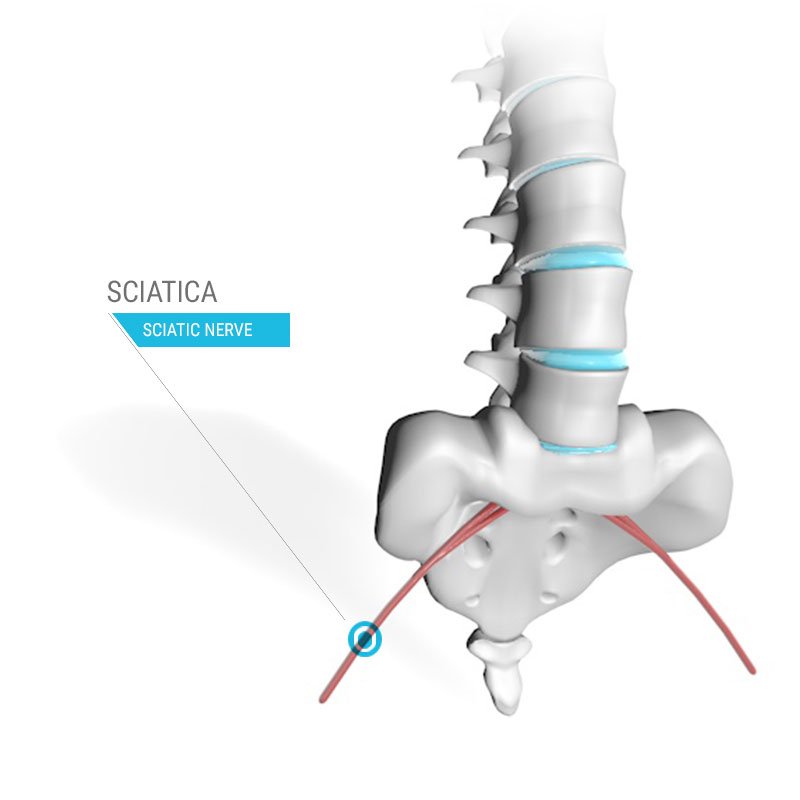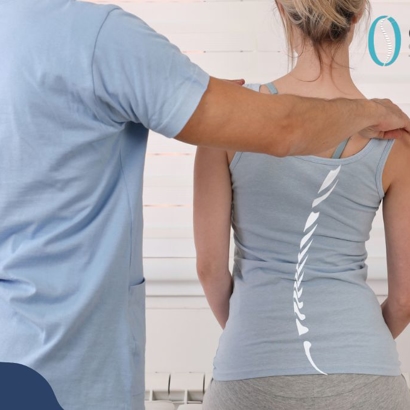
Effective Sciatica Treatment in Tampa
Sciatica is a general term used to describe pain in the back, hip, and legs caused by compression of the sciatic nerve that runs from the lower end of the spinal cord down to the lower extremities. This is also known as lumbar radiculopathy.
Contact the professionals at Comprehensive Spine Institute today by calling (727) 300-2537. Schedule an appointment and learn about sciatica treatment in Tampa.
The sciatic nerve is the largest in the human body in diameter and length and is made up of our L4, L5, S1 and S2 nerve roots at the end of the spine. The lower lumbar region of the spine is particularly susceptible to injury because of the wear and tear it takes on a daily basis.
These injuries and abnormalities can impede on the space allotted for the sciatic nerve, therefore compressing it and leading to pain called sciatica.
Patients often refer to the pain as:
- Radiating
- Weakness
- Tingling
- Numbness
- Or shooting that travels down the back, buttocks and legs
Sciatic pain often affects only one side of the body at a time, but in rare cases can affect both. Although sciatica is often referred to as a “condition” it is actually a symptom of a more severe medical disorder.
Herniated discs, bone spurs, spinal stenosis, inflammation and other spinal abnormalities in the lower back can cause compression of the sciatic nerve resulting in sciatic or lumbar radiculopathy.

Understanding the Symptoms of Sciatica Pain
Radiating pain is the number one symptom of sciatica.
Stemming from the lower back, sciatic pain can travel into the:
- Buttocks
- Thighs
- Calves
- And feet
Although sciatic pain is most commonly felt on only one side of the body, patients have experienced bilateral lumbar radiculopathy resulting in pain down both lower extremities.
Key Symptoms to Look Out For:
- Lower Back Pain
- Leg Pain
- Hip Pain
- Calf Pain
- Foot Pain
- Radiating Pain
- Shooting Pain
- Tingling and Numbness
- Weakness In Legs
- Sharp or Stabbing Pain
- Burning Sensations
What Causes Sciatica Pain?
Sciatica is a description of symptoms occurring from inflammation, pressure or injury to the sciatic nerve. Although lower lumbar radiculopathy, or sciatica, is most commonly caused by a herniated disc, it can also be a result of a bulging disc and degenerative disc disease.
It can be a result of stenosis or changes in the vertebra alignment as occurs with a spondylolisthesis or slippage of one vertebra on another. Less commonly, it can be caused by infection or a spinal tumor.
Sciatica can be caused by:
- Herniated Disc
- Degenerative Disc Disease
- Bulging Disc
- Slipped Disc
- Stenosis
- Bone Spurs or Osteophytes
- Arthritis
- Spondylolisthesis
- Injury
- Repetitive Motion or Overuse
- Poor Posture
- Obesity
- Genetics
- Poor Health
-
Minimal Wait TimeYou shouldn't have to wait a profound amount of time to see a physician we'll get you in, in two weeks or less.
-
Education Is KeyWe believe in educating our patients so they feel empowered when making decisions about their care.
-
4 Convenient LocationsWe are easily accessible with 4 locations that are able to provide the same quality of care.
-
Multi-Specialty PracticeWe pride ourselves on providing our patients with care from physicians who specialize in their needs.
Where is Sciatic Pain Coming From?
- L4 NERVE ROOT DAMAGE
A pinched nerve root in the L4 section of the vertebral column usually results in radiating pain in the thigh. This pain can come in the form of numbness, tingling, weakness and shooting. Radiculopathy of the L4 nerve root can also cause this pain to extend into the lower leg, ankle and foot. In addition, patients may experience difficultly moving the foot in an upward motion. - L5 NERVE ROOT DAMAGE
A pinched L5 nerve root usually results in radiating pain in the foot. This pain can come in the form of numbness, tingling, weakness and shooting and is commonly felt in the big toe, inside of the foot, top of the foot and ankle. Radiculopathy of the L5 nerve may also cause loss of coordination in the foot and toes. - S1 NERVE ROOT DAMAGE:
A pinched nerve in the S1 section of the vertebral column usually results in radiating pain down the backside of the leg and into the outside of the foot. This pain can come in the form of numbness, tingling, weakness and shooting. S1 nerve root Radiculopathy may cause pain or numbness in the little toe and top of the foot. Consequently, patients find it difficult to stand on their tip-toes or raise their heel off the ground.
The Latest In Orthopedics
-
 Failed Back Surgery Syndrome: Why It Happens and What You Can Try Next
Failed Back Surgery Syndrome: Why It Happens and What You Can Try NextUnderstanding Failed Back Surgery Syndrome (FBSS) Imagine going through spinal surgery, filled with hope that the ...
Read More -
 Minimally Invasive Spine Surgeries: Benefits, Procedure, & Recovery Times
Minimally Invasive Spine Surgeries: Benefits, Procedure, & Recovery TimesDiscover the Benefits of Minimally Invasive Spine Surgery If you're dealing with back pain or a spinal condition, the ...
Read More -
 The Case for Epidural Steroid Injections
The Case for Epidural Steroid InjectionsDiscover Relief with Epidural Steroid Injections Living with chronic spinal pain can be exhausting, impacting every ...
Read More -
 Innovative Treatments for Back Pain: Exploring the Latest Advances in Spine Care
Innovative Treatments for Back Pain: Exploring the Latest Advances in Spine CareInnovations in Back Pain Treatment for a Healthier Future Dealing with back pain can take a toll on every aspect of your ...
Read More
.2507221742487.jpg)
.2506161530097.jpg)

